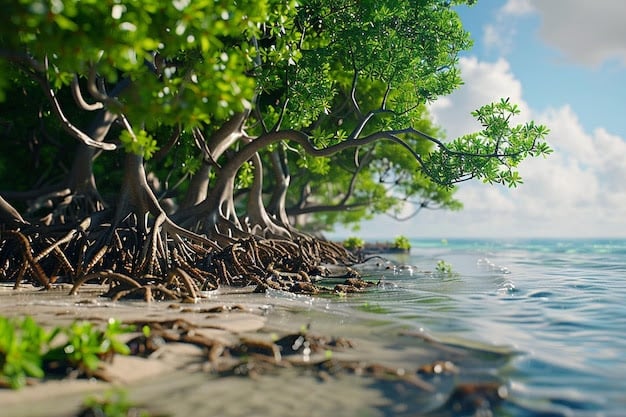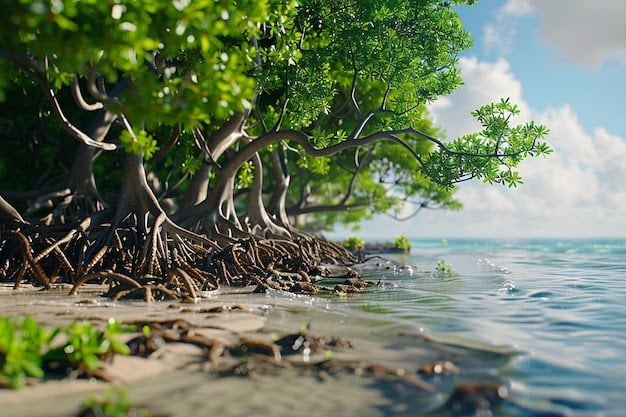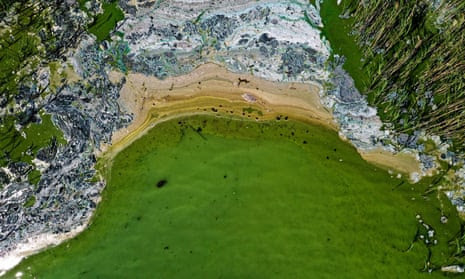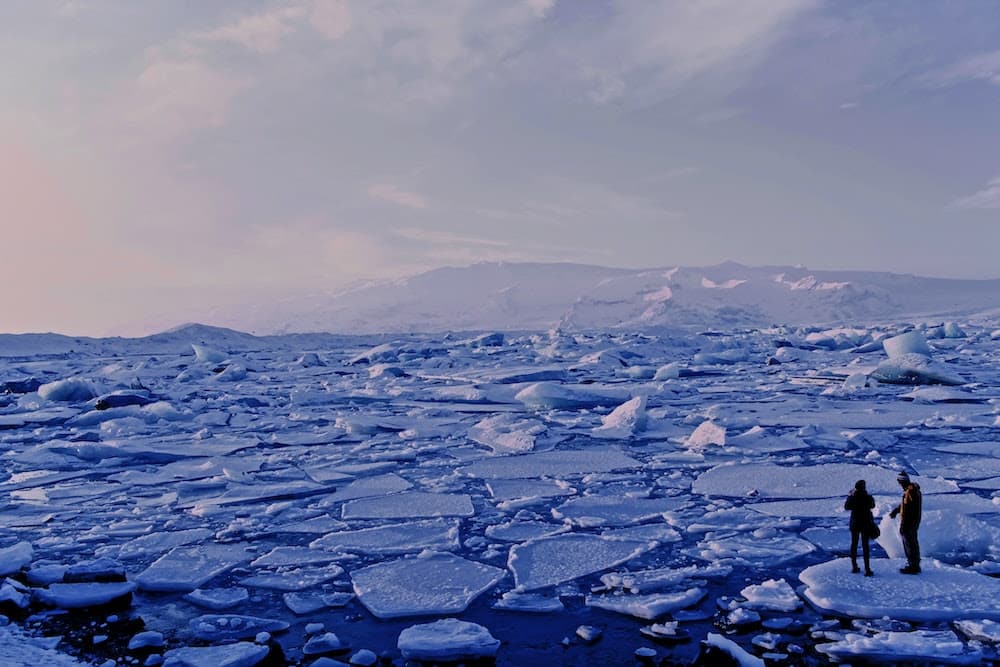
The mangrove is a place of intense biodiversity, with very high biological diversity and productivity.
Many species of birds, fish, crustaceans, molluscs and others live there. Some aquatic species are strictly endemic to certain mangroves.
The mangrove biome, or mangale, is a distinct saline solution characterized by deposition of coastal environments, where fine sediments (often with rich organic matter content) are collected in areas protected from the action of strong waves.
Mangroves are eroded but, with their vegetation firmly anchored in the soil, they provide natural protection against strong winds, waves from hurricanes and even tidal waves.

Saltwater or sea water to which mangrove trees are exposed in the changing tides, leads to very low water potential in the sediments surrounding the roots.
Once the roots have absorbed water, mangroves exclude some of the salt ions normally harmful to plants.
Due to its harmful effect on metabolic processes, salt that entered the body despite selective absorption is stored in the vacuoles of cells and leads to salty succulence (succulents).
Some mangrove tree species can excrete excess salt through the saline glands of the leaves, while others retain the salt until the leaves are rejected from the plant.
Other adaptations of mangroves to their location affect the roots. The roots need oxygen for cellular respiration, but this is not available in muddy swampy areas.
To ensure the supply of oxygen to the underground roots, mangrove root systems have ventilation systems. Special natural organs (roots with pneumatophores) are supplied with atmospheric oxygen via the lenticels of their bark and lead via the aerial tissues (aerenchymes) of the underground root system.

Natural rejuvenation in mangroves is adapted to the characteristics of the particular site. Thus, the seeds in the fruit still germinate on the mother plant and form cigar-shaped seedlings (viviparous) that survive prolonged drift in ocean currents but quickly take root in favorable locations.
Other mangroves also have well-developed and floating fruits or seedlings.
Because of the high energy requirements required for plant adaptation to a specific mangrove site, these forests often reach heights below 5 metres. However, in an optimal environment, they can exceed 20 metres.
Along the arid coasts, on coral islands and at the northern and southern boundary of subtropical distribution, a mangrove remains low and bushy.

The mangrove root system and sediment collection between the roots provide habitat and nurseries for many organisms. Indeed, mangroves are important spawning and rearing areas for fish, crabs and shrimp, some of which later populate coral reefs or other coastal ecosystems.
In addition to coral reefs and tropical rainforests, mangroves are among the most productive ecosystems on the planet. Reptiles and small mammals live in the vicinity or canopy of mangrove forest.
Many waterbirds use the rich food supply and nest in tree tops.
The dense root system of mangroves provides a large number of organisms in a small space through a large number of smaller habitats.
The roots provide safe habitat for many fish, clams and crabs, and provide the best conditions for larvae and juveniles of many species. Snails, algae, oysters, geese, sponges and other more or less sessile organisms live on the wood roots of trees.

Fish (typically from the Sciaenidae) live in deeper waters.
Therefore, many mangrove forests are used for human harvesting (crabs, molluscs and shellfish); alongside this is the aforementioned importance of mangroves for fish and shrimp stocks.
Another important aspect is that mangroves provide protection against coastal erosion. The destructive effect of tsunamis and tidal waves on human settlements on the coast can be reduced by the presence of intact mangrove forests.
Deforestation or other destruction of mangrove forests is one of the most important co-factors of land loss worldwide, especially on the smaller islands in the tropics.
Nevertheless, the preservation of mangroves exists despite tourism development because they are located in a limited space in competition with inaccessible wetlands. Damage on the beach is often visible only after decades.
Mangrove forests are threatened in many parts of the world mainly by the planting and expansion of intensively managed shrimp farms (shrimp farming).
Because water is highly contaminated with chemicals after only three to ten years, it must be abandoned after only a few years. Reforestation of mangroves is almost impossible after this.

Other sources of danger are oil pollution (Panama, Persian Gulf, Niger Delta), but also the drainage of the mangrove zone during the development of settlements in the coastal area.
The local population uses mangrove wood as firewood, for charcoal or tannins.
Income from inshore fishing has fallen, while mangrove forests have been heavily cut down.
Mangrove reforestation efforts are underway in, for example, Vietnam, Thailand, India, Sri Lanka and the Philippines. Despite these efforts, the destruction of mangrove areas continues: the loss over the period 1980–2000 represents 25% of the area available in 1980.




